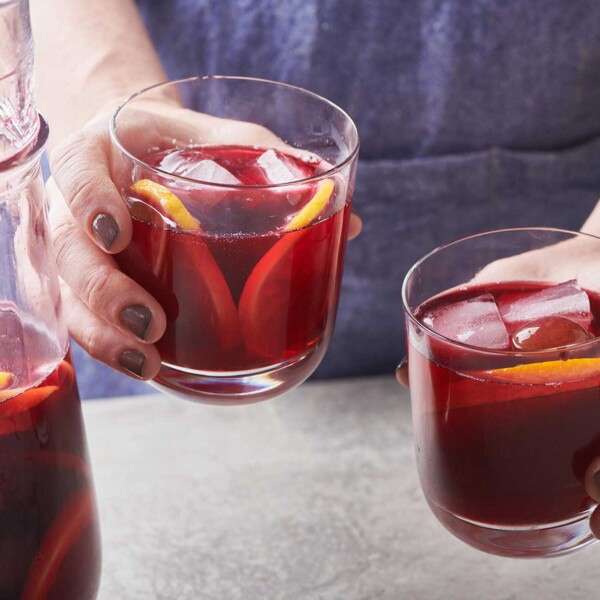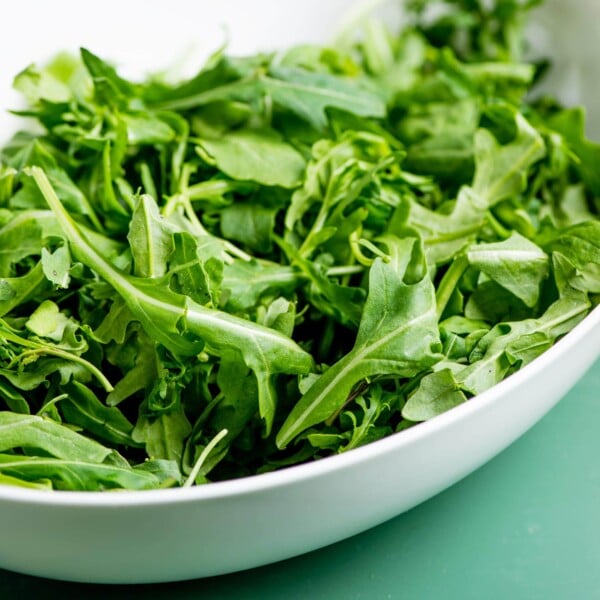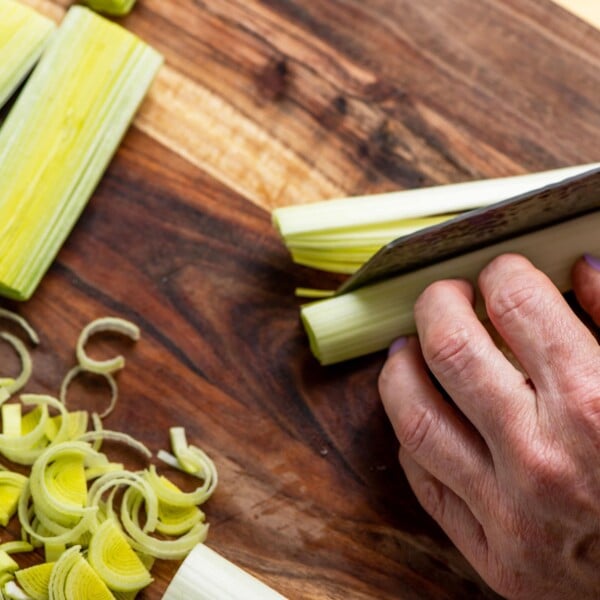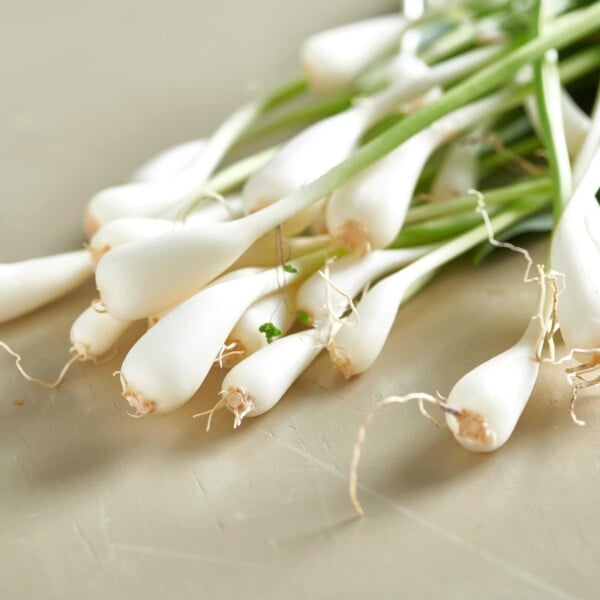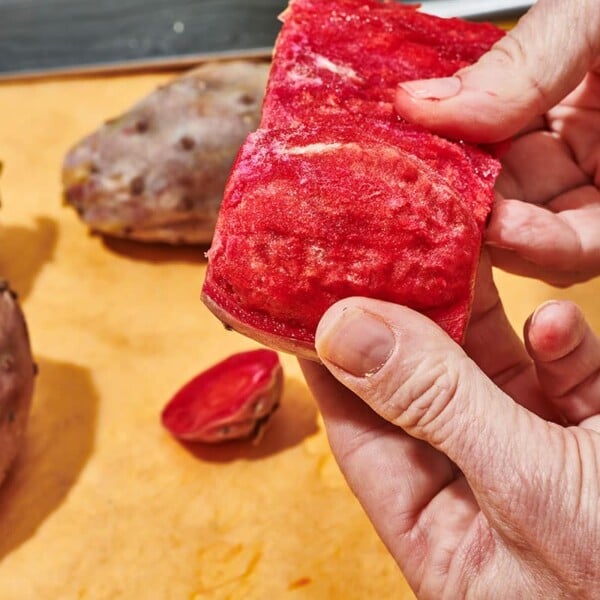How to Eat Passion Fruit
on May 12, 2021, Updated Jul 26, 2023
This post may contain affiliate links. Please read our disclosure policy.
Here's how to get juice from the exotic sweet-tart passion fruit!
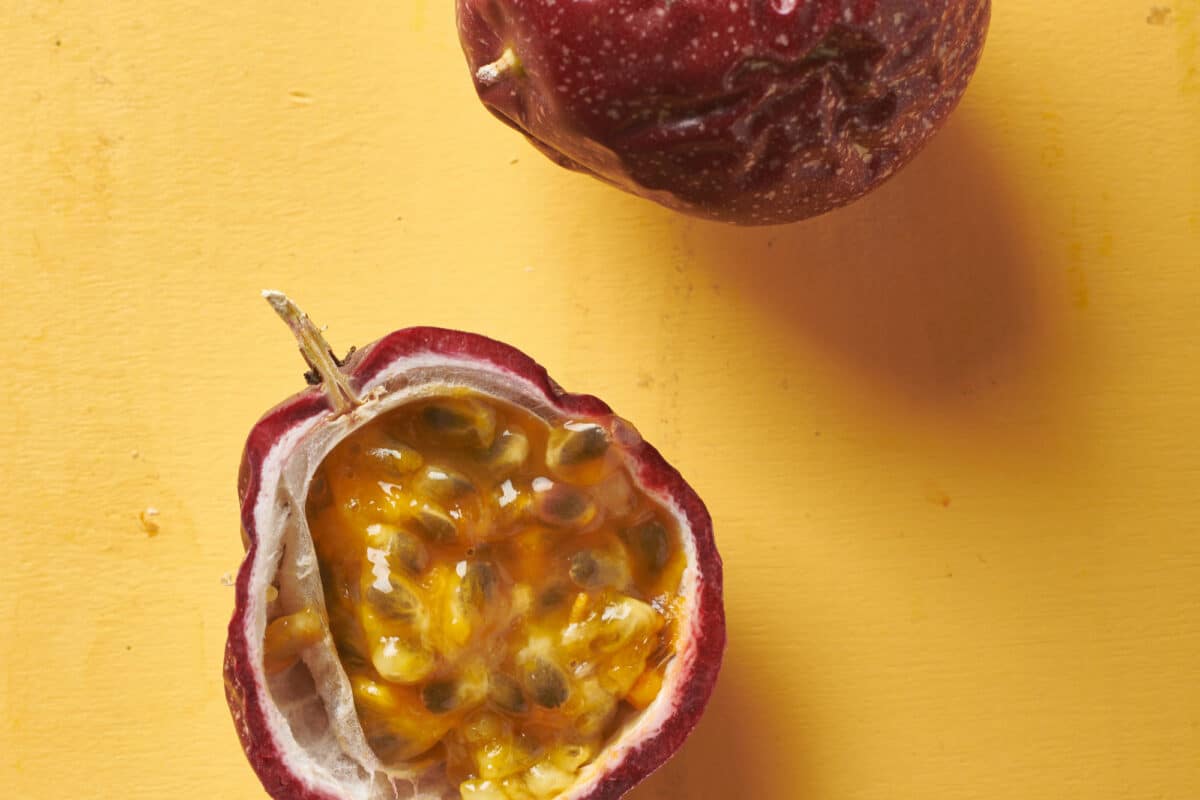
Lore has it that when you eat passion fruit, you will fall in love with the next person you lay eyes on. That would be a powerful fruit, wouldn’t it? And possibly a little frightening…
But let’s skip over the fiction and stick to the facts. Fact is, there are many ways to use passion fruit other than eating it raw or drinking the juice straight-up. Passion fruit marinades and sauces go extremely well with fish and seafood, or chicken, giving these proteins a tropical island-ish flavor. Mix some passion fruit puree with sparkling water for a refreshing and simple mocktail, or add the puree to a fruit smoothie.
On the boozy side, you could combine passion fruit pulp with different alcohols for cocktails: try passion fruit puree or juice with coconut rum, ginger ale, and pineapple juice, or stir some into vodka with a generous splash of lime juice.
The fruit can also be baked into cakes and tarts or used in ice creams, sorbets, or granitas. It also lends fantastic flavoring to curds and custards, mousses, fruit butters, and puddings.
Table of Contents
- What Is Passion Fruit?
- What Does Passion Fruit Look Like?
- What Does Passion Fruit Taste Like?
- Where Can I Find Passion Fruit?
- How Do I Know if Passion Fruit Is Ripe?
- How to Prepare and Eat Passion Fruit
- How to Make Passion Fruit Juice or Puree
- How to Store Passion Fruit
- FAQs
- Add Passion Fruit Juice to Drinks
- How to Cook More Exotic and Tropical Fruits
- How to Prepare Passion Fruit Juice or Puree Recipe
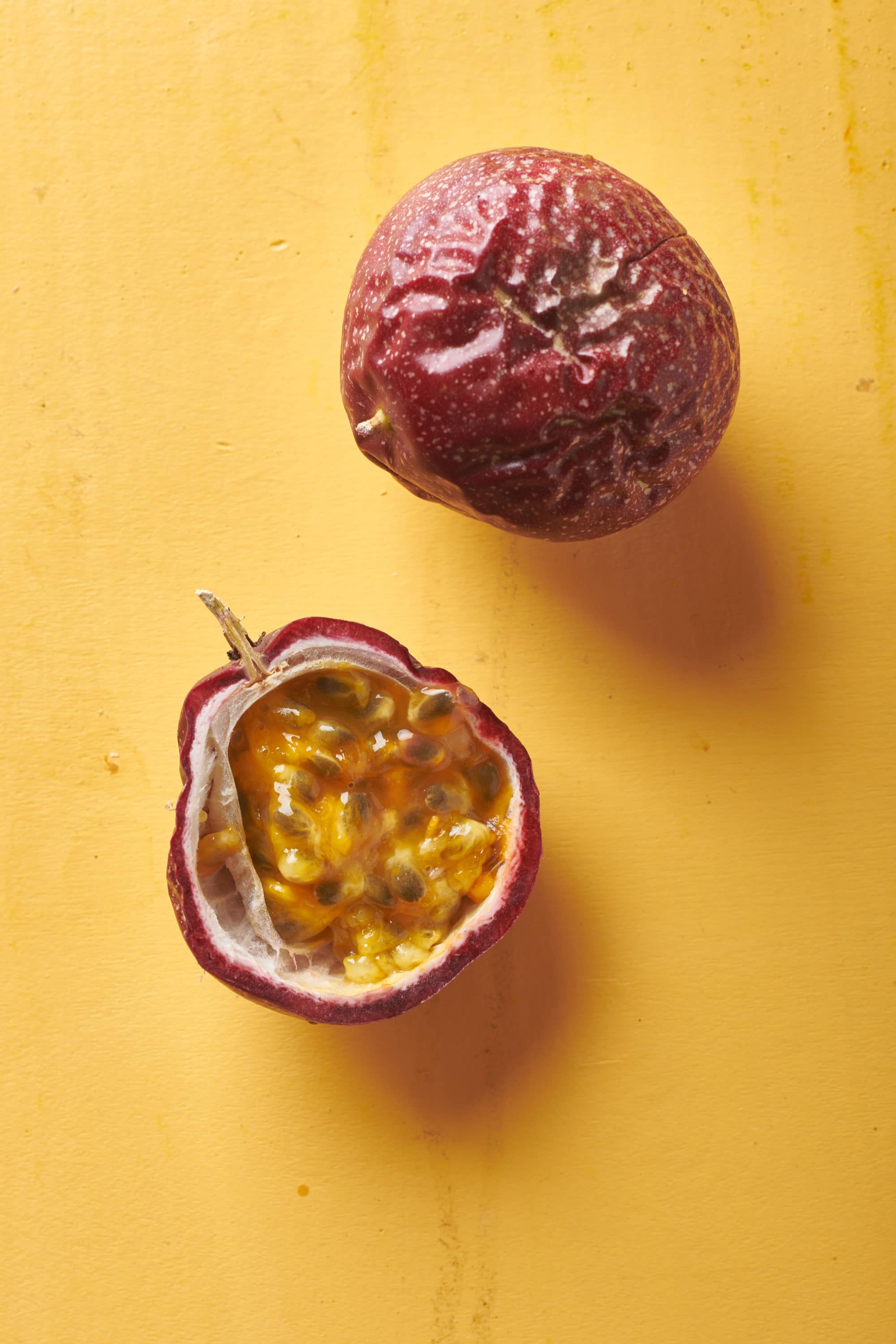
What Is Passion Fruit?
Passion fruit comes from a type of flower called a passion flower (perhaps that’s not shocking). It is a tropical fruit common to South America and Australia, but it also grows in sub-tropical climates, including Florida and California. This fruit has a tough outer rind and a juicy, seed-filled center, which looks a bit like gelatinous goop. When you get past the texture, though, the taste is fresh and amazing.
What Does Passion Fruit Look Like?
The most common passion fruit are purple and either round or oval. There are a few varieties of this fruit — some may be yellow and slightly larger. If your passion fruits are green, they are not yet ripe; they also have a thick waxy rind that wrinkles as the fruit ripens, so look for wrinkles when picking which fruit to slice into. Inside, the pulp is a combination of orange-colored juice and edible small, crunchy seeds.
What Does Passion Fruit Taste Like?
Passion fruit has a sweet-but-tart flavor and a fragrant aroma, which adds to the eating experience. It’s hard to compare them to another fruit since they are so unique, but if pressed: think a little like a kiwi, a little like pineapple.
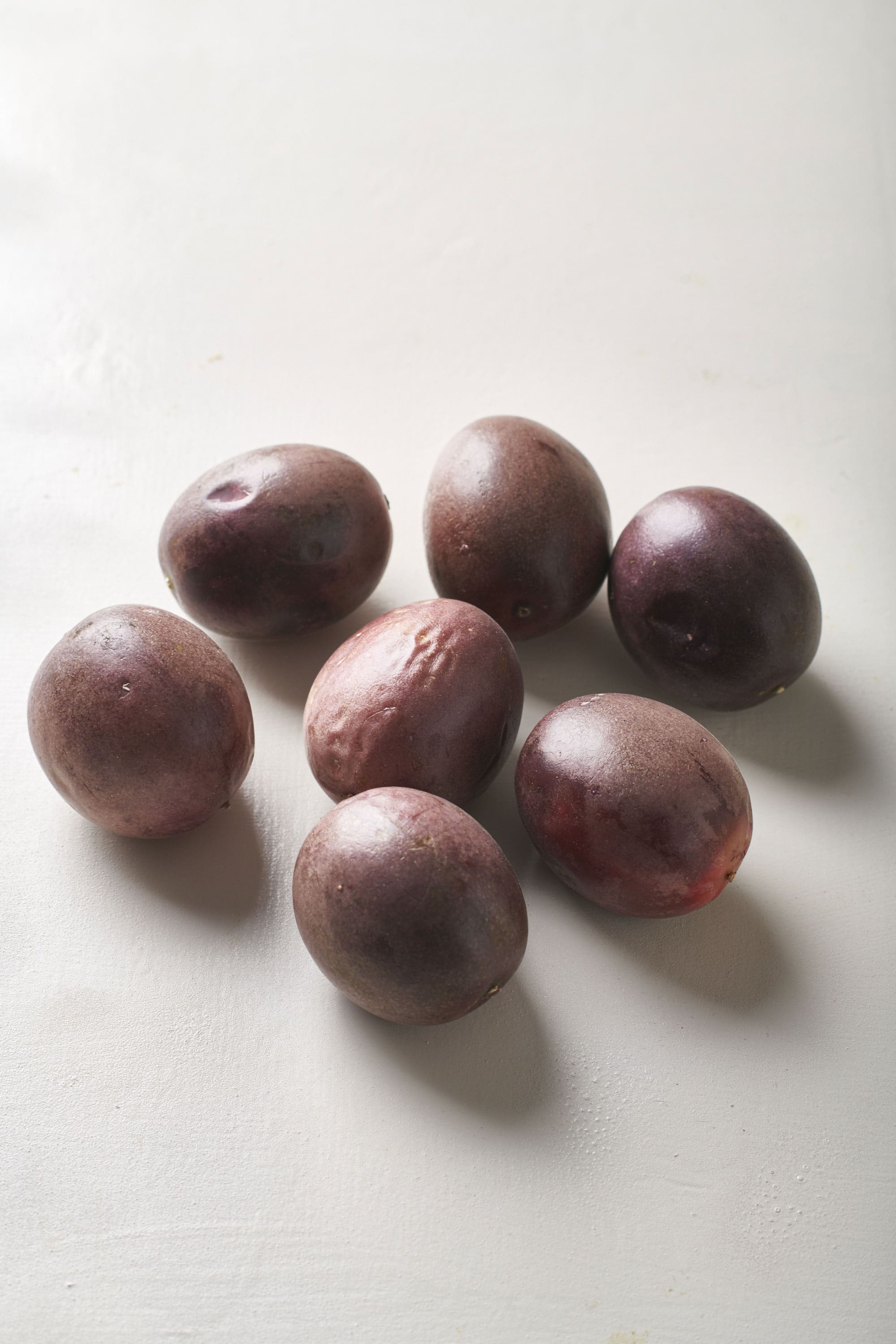
Where Can I Find Passion Fruit?
Passion fruit is sometimes available in supermarkets, but more often, you’ll need to go to specialty markets or Latin and Caribbean markets to find some. There, you might find the fruit labeled called “parcha” or “maracuya.”
If you want the pulp or juice, but can’t actually find the fruit itself, look in the freezer section of your regular or specialty market, and you might find it there. You may also find passion fruit juice and concentrate in juice aisles or the freezer section, although some may contain other juices or sweeteners mixed in.
How Do I Know if Passion Fruit Is Ripe?
Passion fruit is most ripe when it appears all wrinkly and is a dark purple or dark yellowy-red in color — not what you are usually looking for in a ready-to-eat fruit, but true here.
Green passion fruit is unripe and should be left on the counter for 3-7 days to ripen. The heavier fruits are the best, as they have plenty of moisture inside. Try shaking a passion fruit: if you feel a lot of liquid or pressure in there, that means it’s filled with good stuff! You can also do the smell test — tropical aromas are a good sign. As with all fruit, avoid fruits that have bruising or discoloration or any signs of mold or decay (but keep the ones with the wrinkles — that means they are ripe!). If they feel super light, the moisture has probably evaporated, and it’s past its prime.
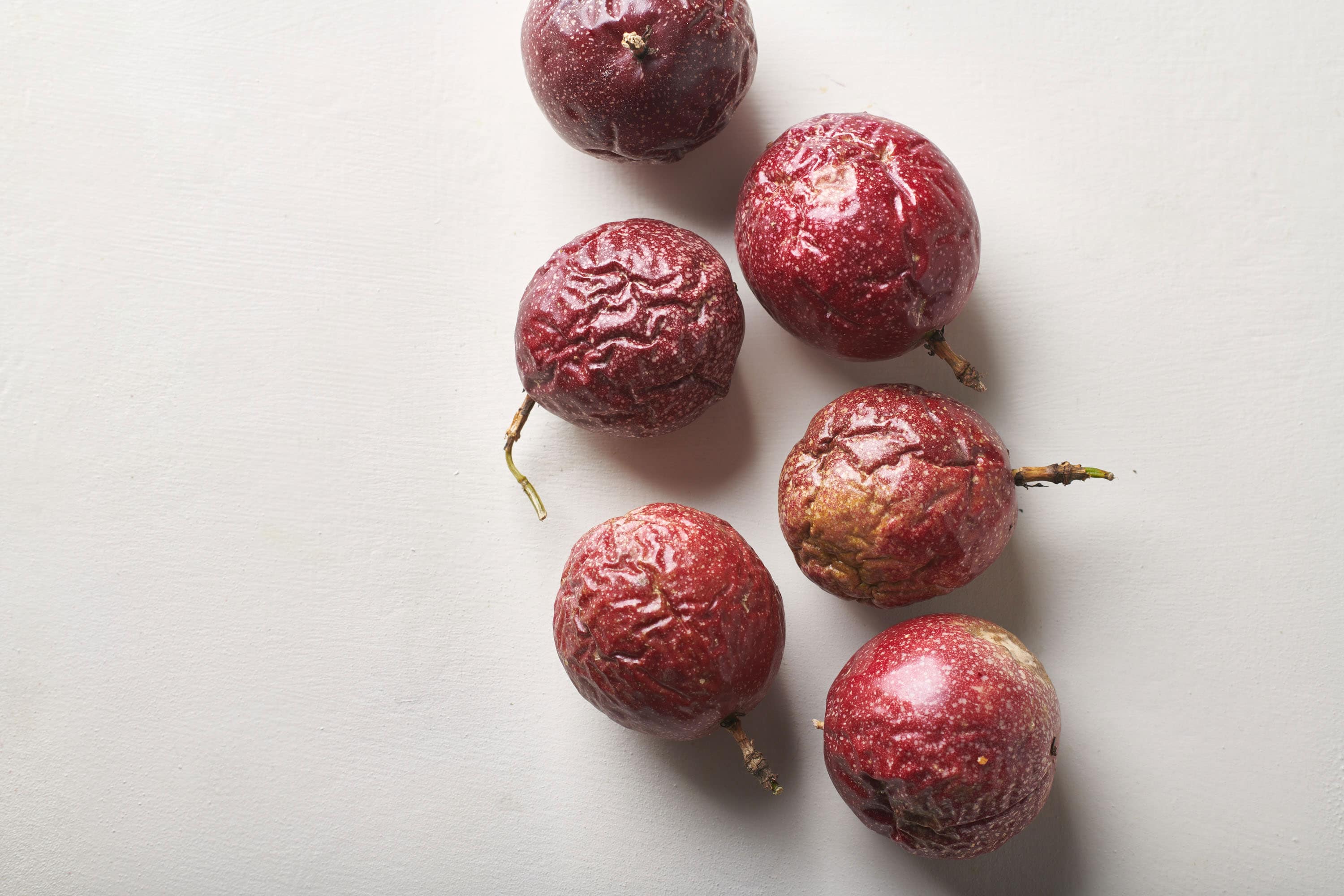
How to Prepare and Eat Passion Fruit
- Clean your fruit: Wash and dry the fruit to remove any pesticides or preservatives.
- Slice them open: Then, simply cut the fruit in half. You can just scoop out the pulp and eat it — some people like a little sugar sprinkled over to cut through the sourness, while other people love the bit of sourness. Avoid scraping the white part of the inside of the skin, which is bitter like the pith of citrus fruit.
How to Make Passion Fruit Juice or Puree
To make juice: If you are looking for the juice, then you want to remove the seeds. Do this by pressing the pulp through a sieve which will separate the seeds from the liquidy pulp. You won’t get a ton, but if you are using the juice for baking or another purpose, this is a necessary task.
To make puree: If you’re looking for puree instead of juice, simply put all the seeds and juice in a blender and puree, straining for the end product. A bit of crunch will be part of the puree — but it’s a whole lot easier than straining out all of the seeds.
Everything you need to know about how to buy, store, prepare, cook and eat passion fruit.
Tweet This
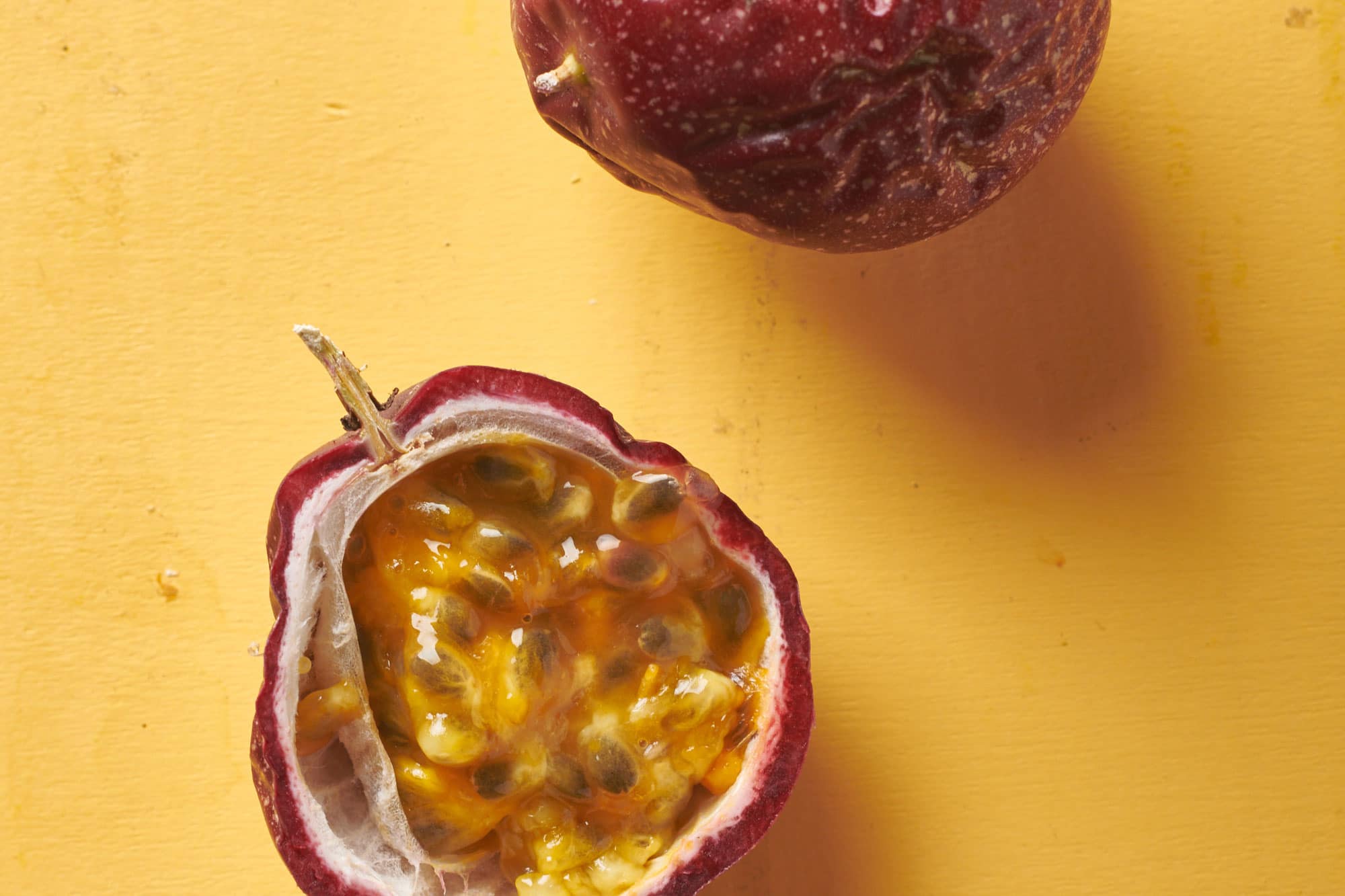
How to Store Passion Fruit
If your passion fruit is not ripe, leave it on a counter for 3-5 days to ripen. The best way to get the longest life out of your ripened passion fruit is to store them in the crisper or vegetable drawer of your refrigerator. This way, they can last approximately 1 week.
Passion fruit puree, juice, or pulp freezes really well. So if you get your hands on lots of passion fruit and want to make it last, make a batch of juice or puree and freeze it.
FAQs
Yes! They are the tart part of the passion fruit. Some people like to chew them up, while others swallow the seeds whole. You can blend them into a passion fruit puree as well. The seeds have a lot of fiber and — in moderation — can be good for digestion.
Passion fruits have a lot of nutritional benefits. They are rich in antioxidants and a good source of nutrients, including fiber, vitamin C, and vitamin A. They are low in fat.
Passion fruit usually is available year-round, but being a tropical fruit, they are more abundant in the warmer months. Its prime growing season is early summer through winter.
Passion fruit takes a long time to grow — usually about two years from planting to maturation — and it’s very finicky, and the plants are very subject to problems. Add to that the fact that usually it needs to be imported into the USA, and the high price tag on these fruits starts making a little bit more sense.
Add Passion Fruit Juice to Drinks
How to Cook More Exotic and Tropical Fruits
Pin this now to find it later
Pin It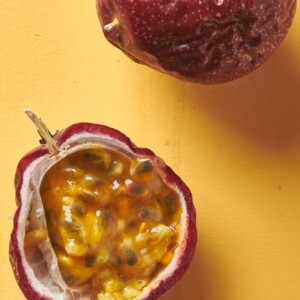
How to Prepare Passion Fruit Juice or Puree
Equipment
- 1 Knife
- 1 Sieve
Ingredients
- 12 ripe passion fruits
Instructions
- First, wash and dry the fruit to remove any pesticides or preservatives.
- Next, simply cut it in half, and scoop out the pulp. Avoid scraping the white part of the inside of the skin, which is bitter like the pith of citrus fruit.
- Next, you want to remove the seeds. Do this by pressing the pulp through a sieve, which will separate the seeds from the liquidy pulp. You won’t get a ton, but if you are using the juice for baking or another purpose, this is a necessary task.
- If you're looking for puree, simply put all the seeds and juice in a blender and puree, straining for the end product. A bit of crunch will be part of the final product — but it’s a whole lot easier than straining out all of the seeds.

